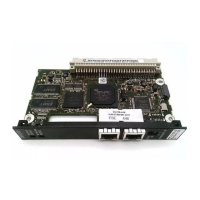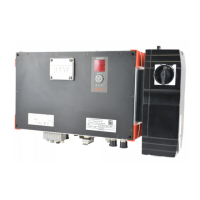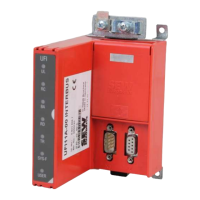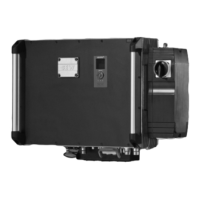68
Manual – Fieldbus Interface DFE24B EtherCAT®
8
EtherCAT
®
introduction
Motion Control via EtherCAT
®
8 Motion Control via EtherCAT
®
This chapter contains information about the EtherCAT
®
functions that enable clock syn-
chronous operation of MOVIDRIVE
®
B connected to an EtherCAT
®
master, which is
necessary for motion control applications.
8.1 EtherCAT
®
introduction
This section describes the functions and terms used for running SEW drive inverters on
EtherCAT
®
in synchronous operation. Comprehensive, detailed technical information
about EtherCAT
®
is available from the EtherCAT
®
user organization, e.g. at
www.EtherCAT.org, and from the manufacturers of EtherCAT
®
master systems.
Based on the cascade control common in drive technology, the principal mechanisms
for motion control applications are described here.
A position setpoint (x
ref
) is the starting point. Using the position actual value (x
act
), the
position controller [1] calculates a speed setpoint (v
ref
). The speed controller [2] uses the
speed setpoint and actual speed value to calculate the torque setpoint (t
ref
) to create
torque in the motor powered by the inverter [3]. Depending on the counter-torque
caused by the driven machine [4], the motor runs with a certain speed (measured by en-
coder [5]). Depending on the motor speed, a position change occurs, which is detected
by a position encoder [5] on the motor. Depending on the application, control systems
for torque, speed or position can be connected in the inverter or higher-level controller.
MOVIDRIVE
®
B can handle all control systems, including position control. In this case,
positioning travel can only be performed when a setpoint position is transferred to the
inverter (e.g. "Bus Positioning" application module). The current position and, once the
positioning command has been executed, a "ready message" is sent to the controller.
In motion control applications, positioning travel with target position and travel parame-
ters such as speed and ramp time is administered in the motion controller that is usually
the higher-level controller. The calculated track curve is then used to transfer a setpoint
6821660555
M
V
X X
[1]
[2]
[3]
[4]
t
ref
v
ref
v
act
x
act
x
ref
[5]
[5] [6]
x
ref
Position setpoint [1] Position controller
x
act
Position actual value [2] Speed controller
v
ref
Speed setpoint [3] Output stage of the inverter
v
act
Actual speed value [4] Driven machine (load)
t
ref
Torque setpoint [5] Encoder (V = speed; X = position)
[6] Optional encoder

